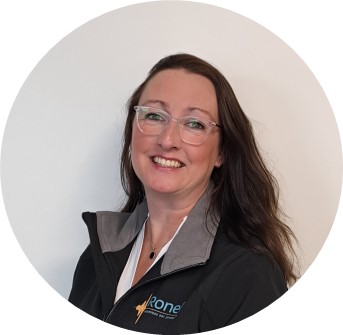Noise-induced deafness is a condition that can occur due to prolonged exposure to high noise levels. At Ronell, the expert in hearing protection and otoplastics, safety and risk awareness are key.
From this expertise, we would like to give you a better understanding of exactly what noise-related deafness is, its symptoms, its causes, and most importantly, how you can prevent this condition or minimise its impact.
Noise-related deafness is a form of hearing loss that occurs when the inner ear or nerve pathways leading to the brain are damaged by persistent exposure to noise.
This can lead to a reduced ability to hear, affecting not only your daily life, but also your well-being and quality of life. It is therefore very important to be aware of the risks and take the necessary precautions.
Noise-related deafness, or hearing impairment due to noise, is a form of hearing loss directly linked to exposure to loud noises.
This condition can occur suddenly manifest or gradually develop over a longer period, depending on the intensity and duration of noise exposure.
Particularly characteristic of noise-related deafness is the loss of the ability to treble hearing, a symptom often observed in elderly people who have been frequently exposed to loud noises throughout their lives. This can result in challenges such as not being able to hear high-frequency sounds, such as a whistling kettle or the soft meowing of a cat, as well as difficulties in understanding conversations, especially in noisy environments where multiple sounds converge.
Working in noise-intensive environments, such as construction sites, factories or regular exposure to loud music without adequate hearing protection, can significantly increase the risk of developing noise deafness.
The insidious nature of this condition makes it all the more important to spot the signs early and take action. The ability to distinguish high-pitched sounds decreases, conversations become harder to follow, and a general feeling that sounds sound "distorted" or "far away" can all be indicators of the onset of noise-related deafness.
It is crucial to make these warning signals not to ignore and seek timely professional advice.
Early detection and intervention can prevent further damage to hearing and help implement strategies to maintain current hearing levels as best as possible.
At Ronell, we are dedicated to educating about and preventing noise-induced deafness, with a focus on the importance of hearing protection and promoting a safe working environment.

Recognising noise deafness often starts with a dull feeling in the ears, a symptom that not only affects hearing, but can also cause considerable stress.
Another common sign is experiencing a Constant noise, beep, or hum in the ear, also known as tinnitus, about which we write extensively on another page of our website: All about tinnitus
What characterises noise deafness in particular is the difficulty hearing high-pitched sounds. This makes having a conversation in a noisy environment extremely challenging. Even talking on the phone can become problematic, especially when you are in a noisy environment. Moreover, you may develop hypersensitivity to sounds that are not normally perceived as annoying.
An effective way to assess the risk of noise-related deafness is to assess exposure to different noise levels understand.
Below is a table illustrating some everyday sounds and their corresponding decibel levels:
| Source | Decibel (dB) |
| Empty living room sound | 50 dB |
| Normal conversation | 60 dB |
| Traffic noise | 70-85 dB |
| Motorcycling | 90 dB |
| Construction site noise | 100 dB |
| Rock concert | 110 dB |
It is important to realise that prolonged or frequent exposure to sounds above 85 decibels can be harmful to your hearing and significantly increase the risk of noise deafness and tinnitus. Failure to properly regulate noise levels in the workplace can have a major impact on hearing health. It is essential to be aware of ambient noise levels and take the necessary steps to protect your hearing.
Do you know the risks of noise pollution? At Ronell, reducing noise levels and improving working conditions are key.
Especially when exposed to 80 decibels or more, it is crucial that you or your employer take appropriate measures, as prescribed in the Health and safety legislation.
These measures can range from purchasing machinery that produces less noise or choosing quiet alternatives, to requiring your employees to wear hearing protection such as earplugs, otoplastics, or earmuffs. In addition, undergoing regular hearing tests is essential to monitor employees' hearing status.
Although sometimes the company doctor may become involved in assessing hearing damage, our aim is to prevent this through proactive measures and awareness.
Ronell represents full-service hearing protection. We are always ready with a tailor-made solution regardless of the size of your business, whether you are in the construction industry or working for the government.
Hearing protection is our passion, and we attach great importance to talking to you personally about how to optimise the hearing conditions in your working environment.
At Ronell, we believe everyone has the right to a safe and healthy working environment, where hearing wellbeing is a priority. Let's work together for a future where hearing damage from work-related noise is a thing of the past.

Trapezium 400
3364 DL Sliedrecht